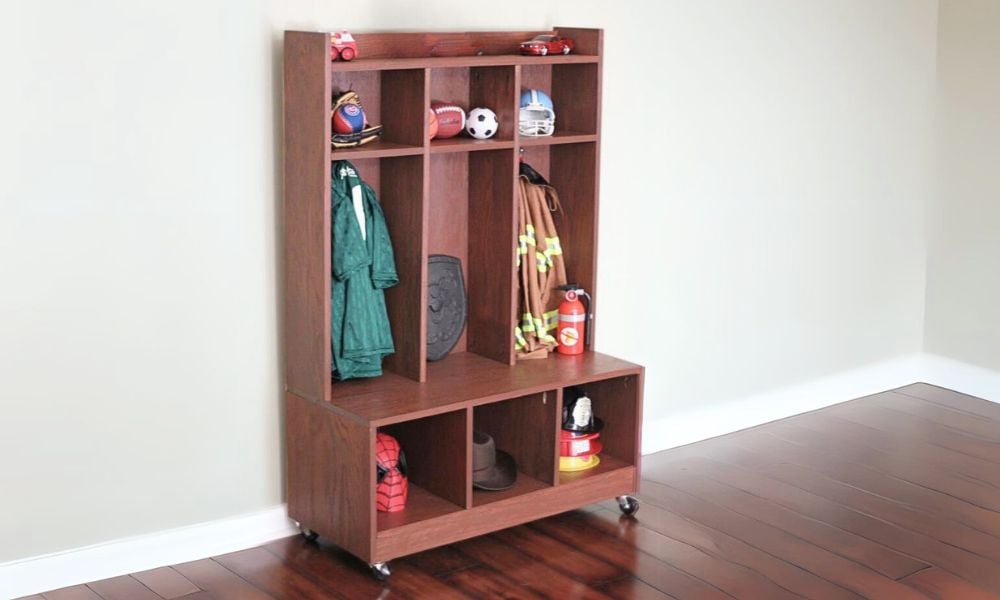
This diy hall tree is built from one sheet of plywood! Get the free template and plans with step by step instructions, diagrams, shopping and cut list and build this.
Dimensions
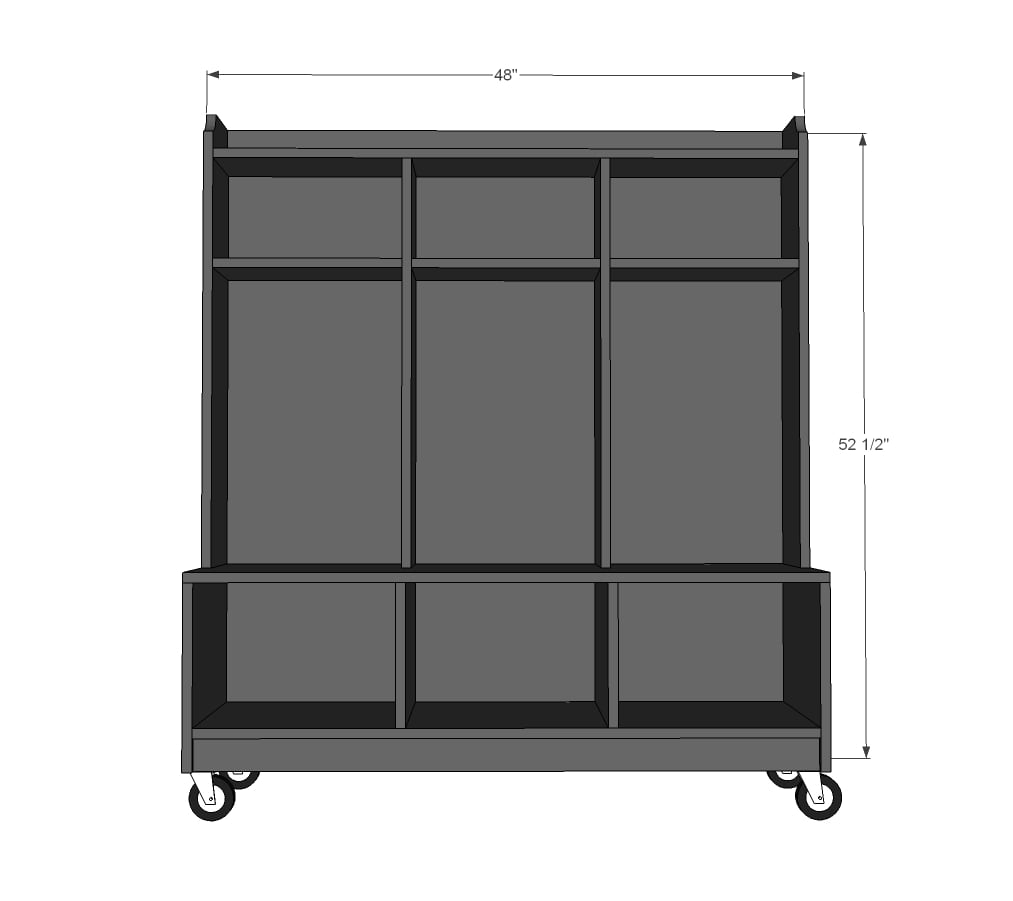
Dimensions are shown above.
Preparation
Shopping List
- 1 – sheet ¾” thick plywood
- 4 – 4 feet long 1x3 boards in matching species
- 1 – half sheet ¼” plywood in matching species
- 4 – caster wheels with plates
- 1 ¼” Pocket hole screws
- 1 ¼” brad nails
- Wood glue
- 3/4" Edge Banding in matching wood veneer
Cut List
- 1 – 3/4" plywood @ 15-3/4" x 48”
- 2 – 3/4" plywood @ 15-3/4" x 14”
- 2 – 3/4" plywood @ 15-3/4" x 10 3/4”
- 1 – 3/4" plywood @ 15-3/4" x 46 1/2”
- 3 – 1x3 @ 46-1/2"
- 2 – 3/4" plywood @ 7-3/4" x 36-1/4”
- 1 – 3/4" plywood @ 7-3/4" x46-1/2”
- 2 – 3/4" plywood @ 7-3/4" x 33”
- 1 – ¼” plywood 48” x 48”
- 3 – 3/4" plywood @ 7-3/4" x 15”
Cutting Instructions
After cutting the plywood pieces, apply edge banding to the front edges.
Instructions
Step 1
The first step is to break the plywood panel down in size.
Rip two strips, 8 feet long by 15-3/4" wide. Then cross cut 38" off one of the strips.
Rip the remaining strip and the 38" strips into pieces 7-3/4" wide.
If you don't have a tablesaw, here is a method of using the circular saw to make good rip cuts:
Step 2
Step 3
Step 4
Step 8
Finishing Instructions
Preparation Instructions
Fill all holes with wood filler and let dry. Apply additional coats of wood filler as needed. When wood filler is completely dry, sand the project in the direction of the wood grain with 120 grit sandpaper. Vacuum sanded project to remove sanding residue. Remove all sanding residue on work surfaces as well. Wipe project clean with damp cloth.
It is always recommended to apply a test coat on a hidden area or scrap piece to ensure color evenness and adhesion. Use primer or wood conditioner as needed.
It is always recommended to apply a test coat on a hidden area or scrap piece to ensure color evenness and adhesion. Use primer or wood conditioner as needed.
Project Type
Room












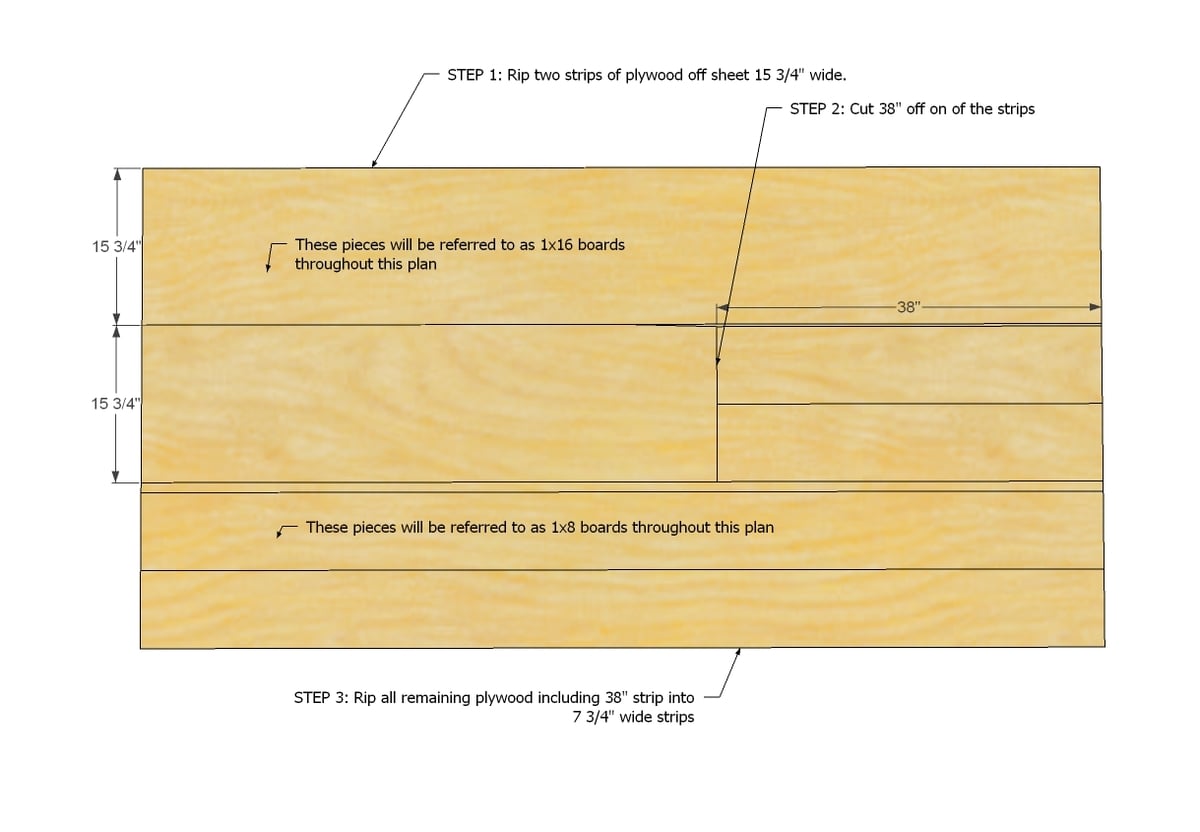
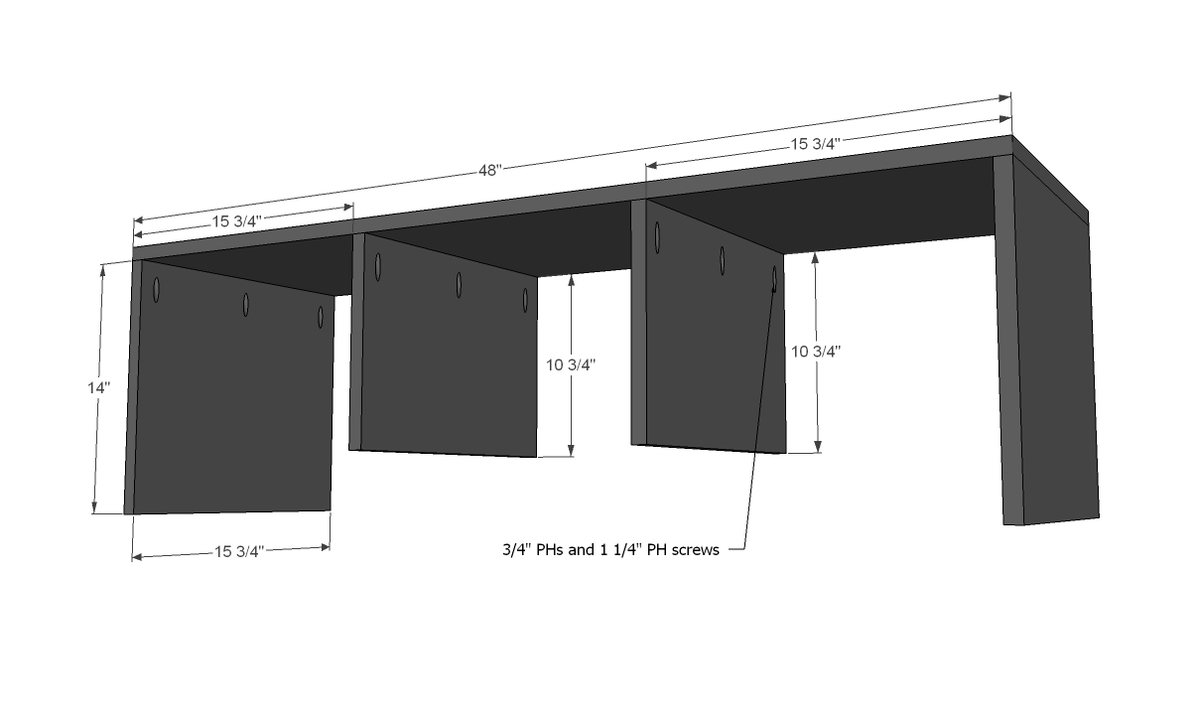

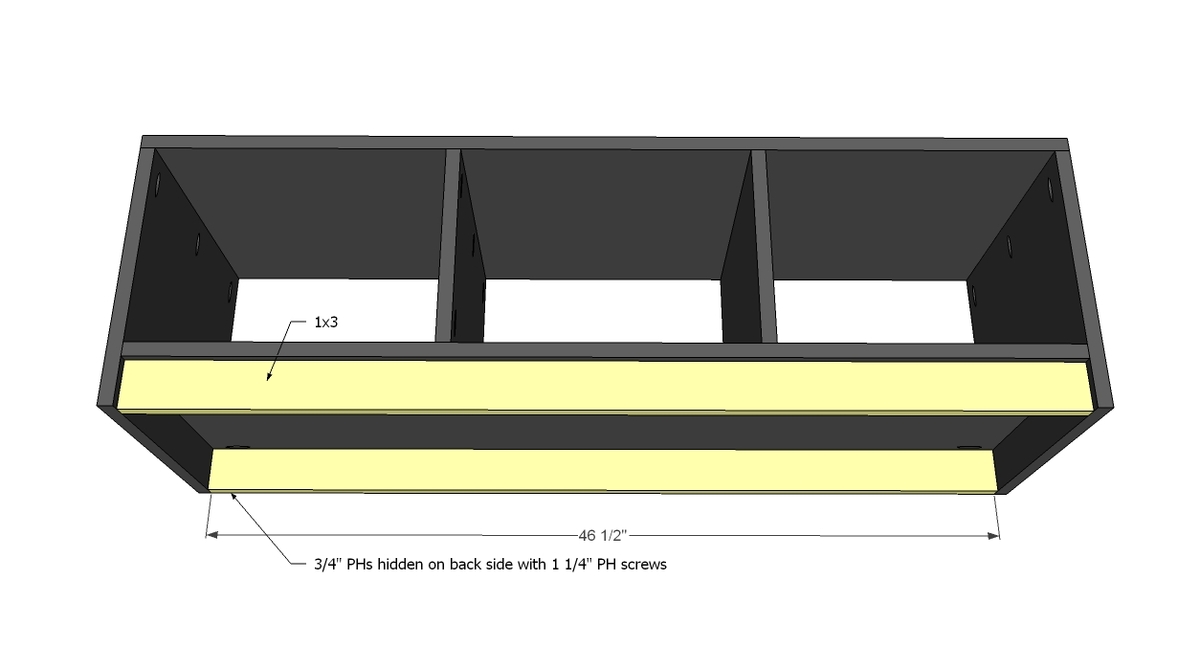
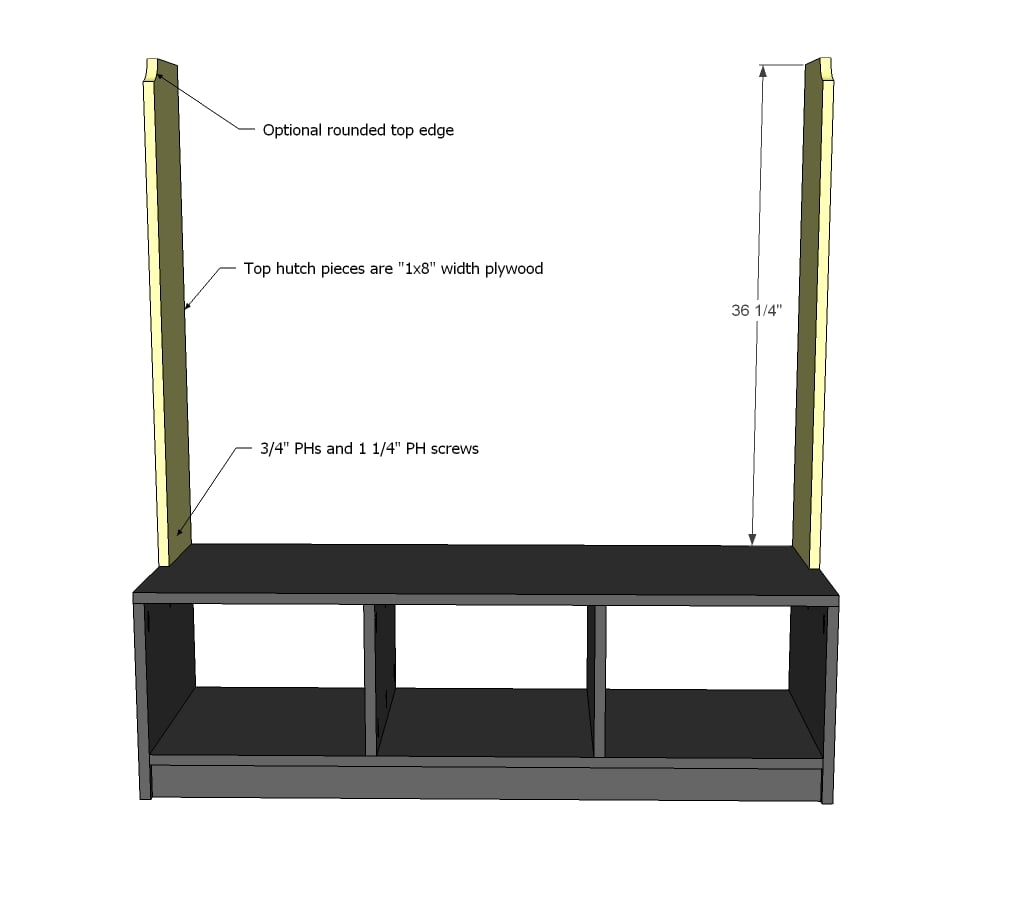
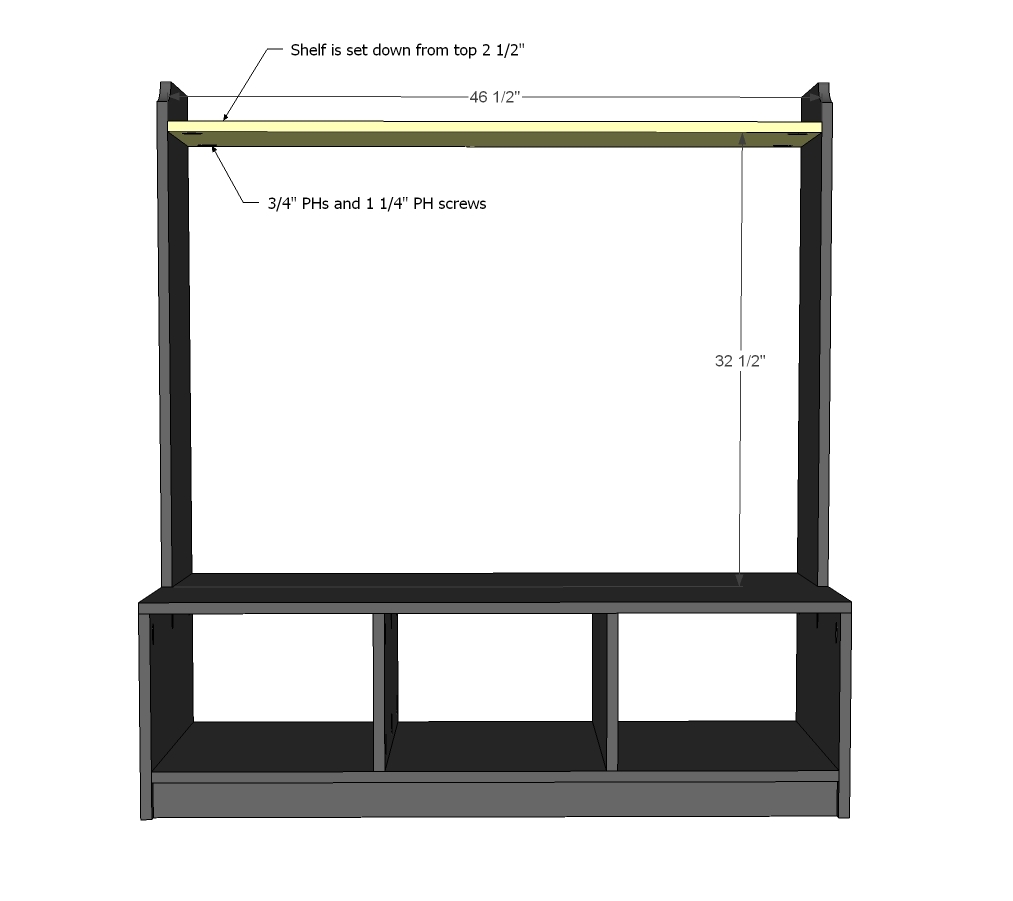

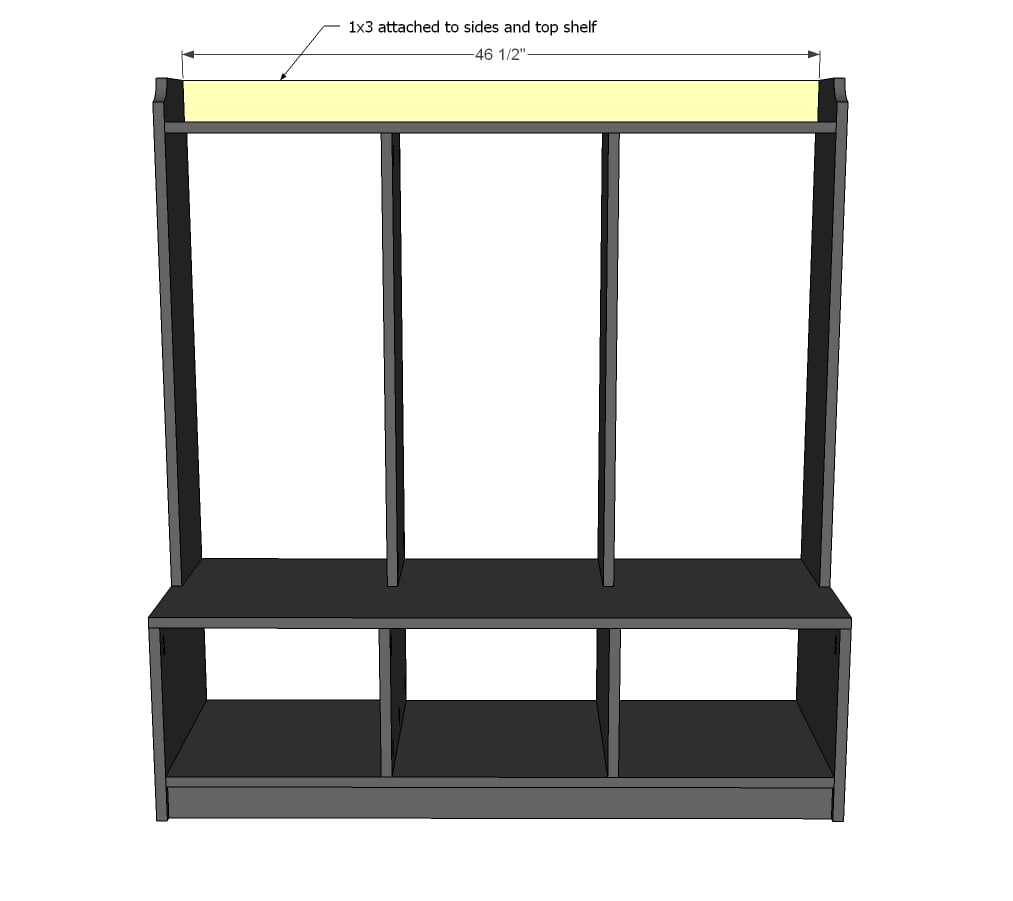

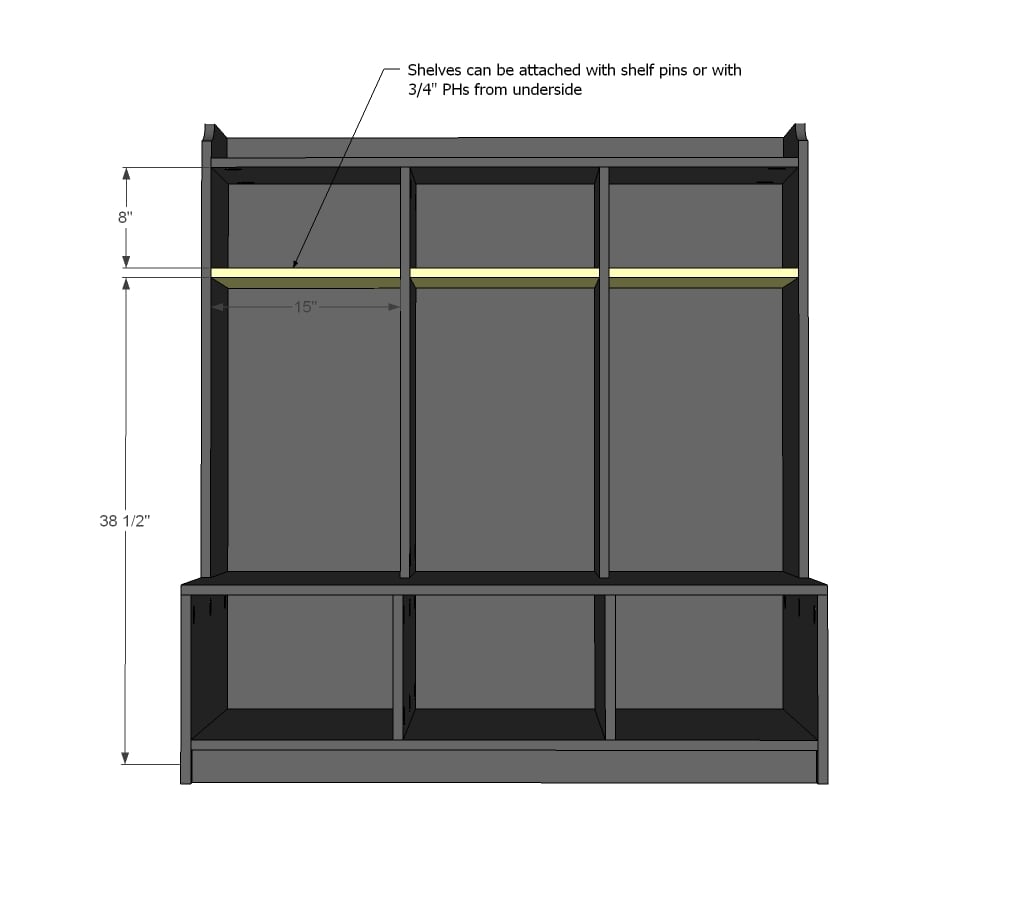
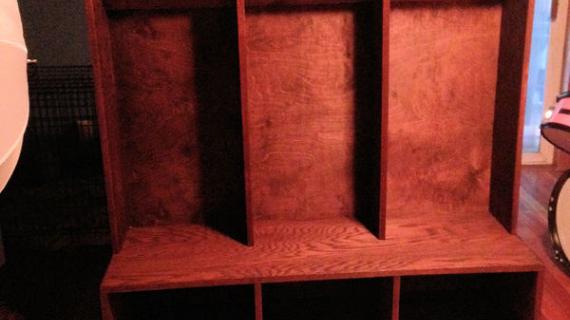
Comments
Deneen Glidwell (not verified)
Mon, 06/25/2012 - 19:39
Haven
Thank you so much for the great workshop. I won the Ryobi compound saw and table! I will be following your blog now to learn how to use it! lol
Bill (not verified)
Mon, 06/25/2012 - 23:16
fastenings and pins
This design looks pretty well thought out. However do you think the pocket system is extra work for fastening the interior verticals? I'd do them simply countersunk from above/below and then you don't have the elliptical holes to fill.
The side verts would be stronger with the pockets though because of the grain directions.
The plywood back is actually critically important. If done right, with a good glue joint it will hold everything together. Without it, the system is rickety. You could even eliminate the pocket fastenings on the outer verts that are toward the back--because of the support of the back.
Now, for shelf pins: you don't describe how you deploy these. Accuracy of placement is important to prevent wobbly shelves. How did you do it?
Ilana (not verified)
Sat, 07/07/2012 - 20:22
Fixing some issues
Hi, Ana
This is my first project- I know, kinda crazy- and I am having an issue already. When I was sawing my boards, some of my cuts went wrong. Right now I have one 1x16 @ 14" and the second one is shorter, @13.5 approx.
What can I do so that my piece is not totally lopsided?
I since then researched on your blog and saw hoe to make a jig for cutting plywood... Good to know for next time, but what with now?
Also, would you suggest getting the guys at home depot to do every single cut for me in the future? I only have a circular saw...
Thanks!
Ilana
In reply to Fixing some issues by Ilana (not verified)
Ana White
Sat, 07/07/2012 - 21:46
Hi Ilana, great that you got
Hi Ilana, great that you got started!
For a first project, might not be a bad idea to ask the HD to do the board cuts :)
No worries on your cuts being off. Just make both ends the same at 13 1/2" and then take 1/2" off the 10 3/4" boards (make them 10 1/4". Then all you did was shorten the whole project by 1/2"
Good luck on the project!
Ana
ravinirvana13
Wed, 09/18/2013 - 21:29
I think the way you write
I think the way you write feels like having so much passion, I am curious on the way you write down this topic. This is the kind of content that will give clearance to this issue and you have put it in a way that everyone can understand
http://swoggi.rosites.com
Alex01
Wed, 11/13/2013 - 01:07
Pretty Locker
Nice Post